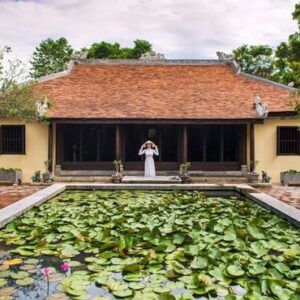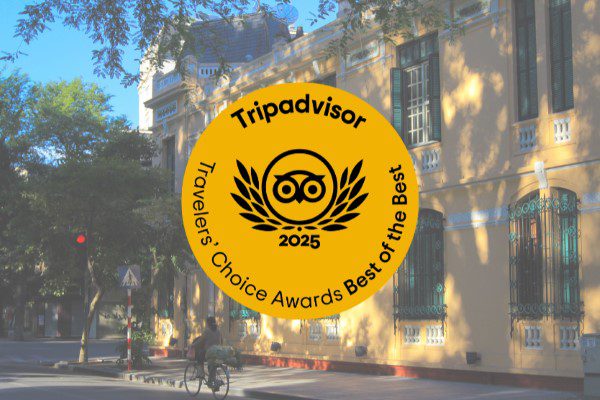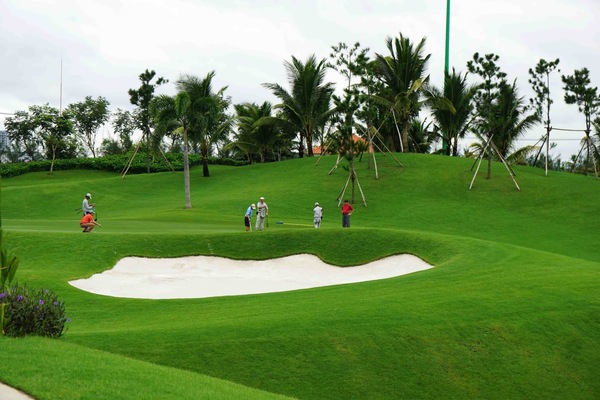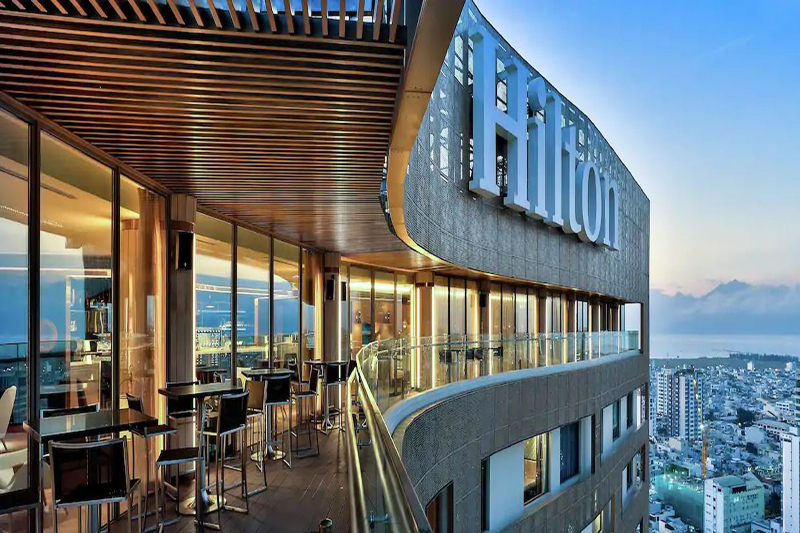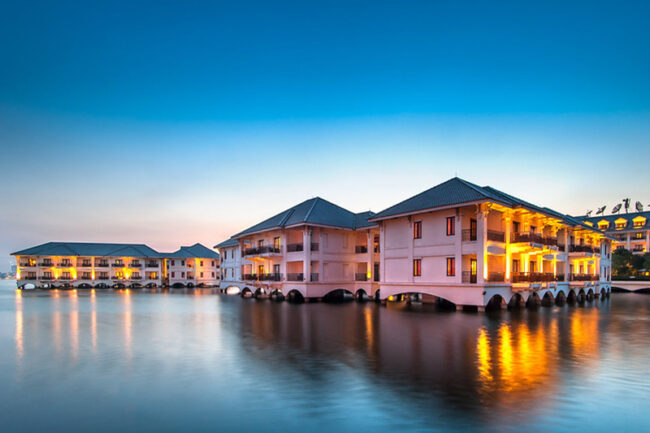Discover An Hien garden house
The long history of the house
An Hien garden house is located north of the Huong River, at 58, Nguyen Phuc Nguyen, Xuan Hoa village, Huong Long commune, Hue. Like much of the architecture in Hue, the garden house faces the Huong River and is not far from the renowned Thien Mu pagoda.
Forfaits touristiques recommandés :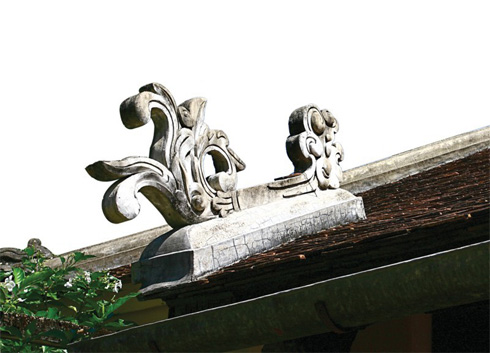
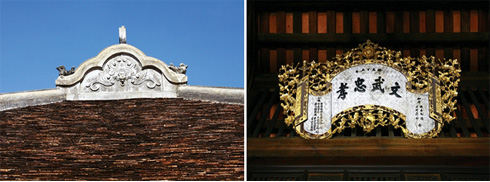
An Hien garden house has a very long history with many different owners. According to the family’s documents, before 1895, its first owner was a princess – a daughter of King Duc Duc. (It was then a princess’s residence). Then, the house was occupied by Mr. Pham Dang Khanh (also known as Pham Dang Thap) – a nephew of the high-ranking mandarin Pham Dang Dung of the Gia Long dynasty. (Mr. Khanh called the dowager Queen Tu Du grandmother). In 1920, the new owner was Mrs. Kham Diep; in 1936 the provincial chief Nguyen Dinh Chi (Chief of Ha Tinh province) lived in the house. His wife, Mrs. Dao Thi Xuan Yen, inherited and managed the garden house. She was the longest owner and conserved and raised the value of An Hien until she died in 1997.
From Vietnam’s independence in 1975 until 1997, when Mrs. Dao Thi Xuan Yen died, An Hien, also called the garden house of Mrs. Chief Chi, became a cultural landmark of the ancient capital. Now, An Hien has been inherited by her daughter-in-law Phan Thi Hoang Oanh and four nephews, though the family lives in France.
A model garden house
An Hien, a remarkable and exemplary Hue garden house, is in harmony with nature and is based on the feng shuiprinciples of Eastern traditional architecture. The house faces the Huong River. The whole area is about 5000m2 with evergreen trees. The modest entrance gate is hidden under shady trees. It is built of bricks and arched with the characteristic features of Hue’s ancient designs. The arch is decorated with tiger-faced designs; both sides of the gate are inscribed with two parallel sentences and a painting with the words: AN HIEN. All decorations are encrusted with glazed terracotta and porcelain. Above the gate are two flying bats and two wooden doors lead to the house…
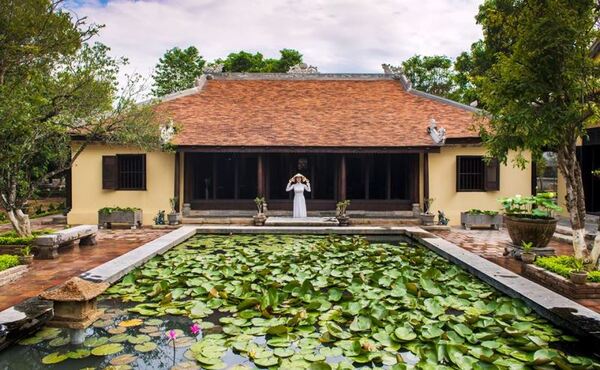
From the entrance gate, passing down a small path under apricot trees, you will feel peaceful and solemn. The house’s setting and beautiful architecture works in harmony with the landscape. At the end of the path with two lines of plump trees, there is a painting of a doorkeeper in front of the house. The painting has a light and flowing design with the word “tho” (longevity) in the middle and “hy” (luck) on two sides. Behind the painting is a cistern full of lilies which is a special element in feng shui. Architecturally the house has three compartments and two lean-tos, with seating in nearly the centre of the garden. The house, which is about 135m2, exemplifies traditional architecture in general but specifically Hue architecture. The house is firmly constructed from wood. There are 48 pillars and other parts are made from jackfruit wood, peck wood and ironwood. The pillars are erected on square stone stages. They are decorated with elegant patterns. The roof is covered in many layers of tiles with dragons at the two ends and lotus flowers on top.
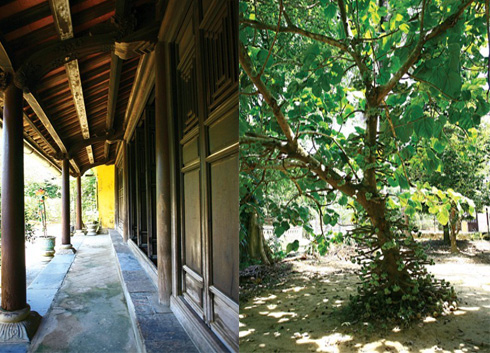
The interiors of the house are separated clearly according to their function. The middle compartment is an area for worship with the principle: “quan Po hou ling” (which means Buddha in front, ancestors behind), two side compartments with the principle: “zou nan you nu” (males on the left, females on the right). Two lean-tos are also arranged like the compartments with males living on the left and females on the right in accordance with the regulations of the ancient feudal system.
Most notably, the house owns an abundance of precious antiques from the imperial palace of the Nguyen dynasty. The lacquered horizontal board with the 4 words: “Van Vo Trung Hieu” (the pen, the sword, loyalty and filial love) written by King Bao Dai in 1937, hangs in the middle compartment and many poems written by King Thanh Thai adorn the living room walls.
To open the house for visitors, Mrs. Dao Thi Xuan Yen built another house on the left to live in. This new house was constructed in a French architectural style.
Peaceful garden with year-round fruit
Not only special because it has been inhabited by many generations of noble families, or because it is a romantic architectural site, An Hien is also an ecological space with fruit all year round.
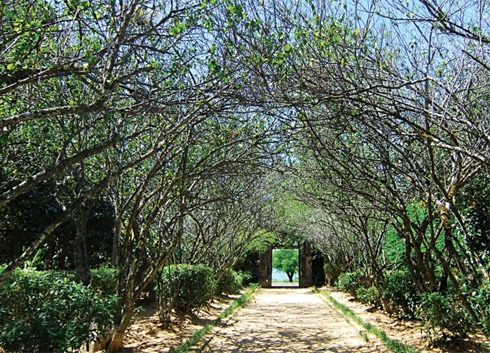
Many trees in the garden are nearly a hundred years old, such as the apricot trees along the entrance path, which was planted in 1940. A number of fruit trees which are highly prized throughout the country are also grown in this garden such as the mangosteens, durian and dragon fruit of the south; apricot, persimmon, and litchi of the north; mulberry and fig from central Vietnam.
In addition, there are many special trees including the Tien Dien sapodilla of Doctor Mai, a great-grandchild of the poet Nguyen Du who carried it from Nghi Xuan – Ha Tinh to give to Chief Nguyen Dinh Chi. This is a precious sapodilla – delicious and seedless. There are also 13 Giang Chau mangosteen trees, a famous fruit in Hue, which were often offered to the King.
An Hien is also a flower garden. In spring, white apricot flowers bloom brightly along the entrance path; red water-lilies cover the water. On the new home is a rig on which dozens of species of orchids are blooming.
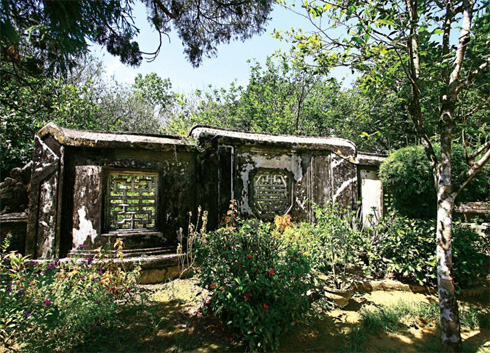
For over a hundred years, An Hien has existed through generations of owners and overcome the upheavals of each era. It is now a peaceful place and a cultural landmark in the ancient capital. Visiting the garden, guests can experience another life, separated from our life: a deeper, slower and more peaceful existence. Not only the place but its harmony with nature and people remind one of the past…

